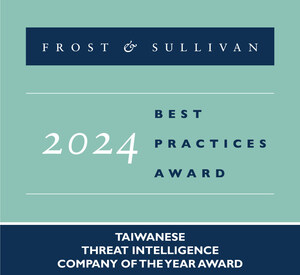China's Cross-border Online Shopping Market set to Exceed US$125 billion in 2018, says Frost & Sullivan
Total online shopping sales in China are set to pass US$1 trillion in 2018, whilst cross-border online purchases will exceed US$125 billion, finds new Frost & Sullivan study
SINGAPORE, May 14, 2018 /PRNewswire/ -- China's online shopping market is the largest in the world, with over 500 million online shoppers set to spend over US$1 trillion in 2018. Of this, cross-border eCommerce (Haitao) purchases (i.e., from a retailer located outside China) are set to reach US$125 billion, according to a new research report, The Cross-border eCommerce (Haitao) Opportunity in China, released today by leading consulting firm Frost & Sullivan, in partnership with China retail strategy expert Azoya Consulting. The study includes research amongst over 1,000 online shoppers in China, together with findings from interviews with over 100 international retailers and brand owners.
"The research revealed the strong interest and expenditure amongst Chinese consumers in buying online from overseas retailers, with the average online shopper in China spending almost US$850 per year on purchases from overseas retailers," said Mark Dougan, Consulting Director, Asia-Pacific, Frost & Sullivan. "Our research indicated that Chinese consumers are significantly motivated by the perceived higher quality and lower risk of buying fake goods that overseas retailers offer."
The research also revealed that:
- Cross-border online shopping is growing strongly, with 63% of Chinese shoppers planning to increase their spending in 2018 compared to 2017
- Fashion is the top category bought from overseas retailers (bought by 22% of online shoppers in the past month), beauty and cosmetics (20%) and mom and baby (15%)
- Japan is the overseas origin country that Chinese online shoppers have most confidence in (72% having confidence in Japanese vendors), followed by South Korea (60%), the US (55%), Australia (37%), France and Germany (both 26%) and the UK (23%)
- Women are higher cross-border online shoppers than men, spending US$976 on average per year, which is 20% more than men. Men seek fast delivery, whilst women seek Chinese language customer support, and relevant content on the supplier's website. Women are more likely to use an overseas supplier's standalone direct-to-consumer website (21% vs. 18% of men).
Whilst Chinese consumers are significantly increasing their cross-border online shopping, international retailers often report challenges in successfully exploiting the market opportunity in China. Over recent years, China has opened up its domestic eCommerce market to international vendors through initiatives such as free trade zones, and over 80% of global retailers now see China as an attractive market opportunity. However, only 30% of online retailers are satisfied with their current level of sales in China. This is particularly the case for those using Chinese marketplaces as their online channel, where only 21% of retailers are satisfied with their current level of sales. Challenges of these marketplaces include the plethora of competing brands, intense price competition, margin-eroding commissions and high upfront costs. Consequently, the research revealed that increasingly retailers are looking to set up their own standalone web stores for the Chinese market.
China's online market may be vast, but it can also be confusing and is highly competitive. Consequently, global retailers need to think carefully about the right way to approach the market. "To build a brand that Chinese consumers trust, which commands a healthy profit margin and repeat buyers, retailers need to approach customers through multiple touchpoints. The key channel should be within retailers' control, accompanied by supplementary platforms," said Don Zhao, Co-Founder of Azoya International. "More and more retailers are establishing standalone websites as the core of their strategies, as these sites directly connect retailers with Chinese consumers who desire foreign brands, while empowering retailers with flexibility and control over their business."
The research confirmed the attractiveness of the Chinese market to global retailers, but also identified that many retailers are struggling to convert that promise into reality. As the Chinese cross-border eCommerce market grows, global retailers need to carefully consider the most appropriate market entry strategy. Successful implementation will then rely on offering the right products through the right channels and with appropriate brand communications to the half-a-billion online shoppers in China.
About Azoya Consulting
Azoya Consulting empowers international retailers with clear and actionable China e-commerce strategy powered by data, research, expertise and business intelligence. With over 5 years' experience in e-commerce to China, Azoya consultants help dozens of international retailers build successful business cases with China entry strategy, e-commerce operation guidelines, digital marketing strategy, O2O strategy, logistics and supply chain. Azoya Consulting is a subsidiary of Azoya International, a borderless e-tailing group that assists international retailers as they expand to China via e-commerce. Learn more at www.azoyagroup.com
About Frost & Sullivan
Frost & Sullivan, the Growth Partnership Company, works in collaboration with clients to leverage visionary innovation that addresses the global challenges and related growth opportunities that will make or break today's market participants. For more than 50 years, we have been developing growth strategies for the Global 1000, emerging businesses, the public sector and the investment community. Is your organisation prepared for the next profound wave of industry convergence, disruptive technologies, increasing competitive intensity, Mega Trends, breakthrough best practices, changing customer dynamics and emerging economies? Learn more at http://www.frost.com
Contact:
Melissa Tan
Corporate Communications – Asia Pacific
P: +65 6890 0926
F: +65 6890 0999
E: [email protected]





Share this article